Empowered, Not Disabled: An Ancient Shaman Effigy Vessel at the Carlos Museum
By Rebecca R. Stone, PhD
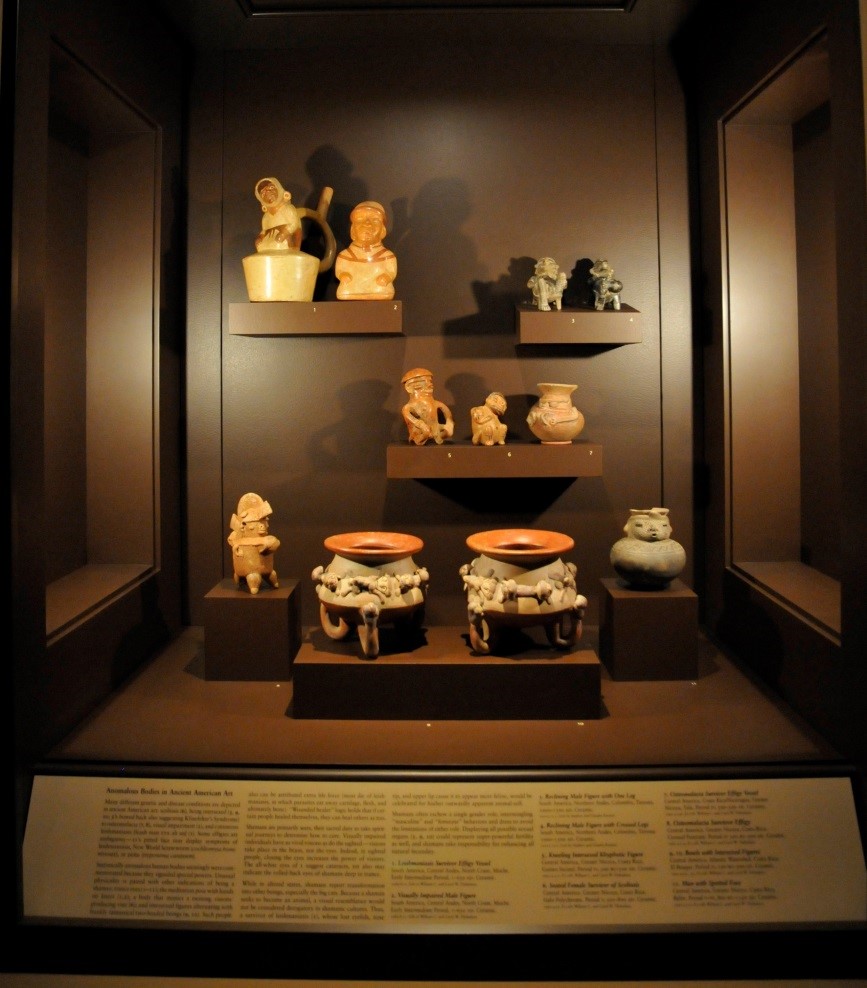
Figure 1. An exhibition case on the first floor of the Michael C. Carlos Museum features a number of ancient American effigies of persons with what we refer to as “disabilities”, including the one at the top left of a man overcoming the flesh-destroying disease we call leishmaniasis. Photograph by Stacey Gannon-Wright, 2017.
In the Michael C. Carlos Museum at Emory University, as part of the permanent collection of Art of the Americas, there is a case filled with small ceramic effigies from ancient Central and South America. Perhaps not as colorful, imposing, or accessible in meaning as the pieces in the surrounding cases, upon further study these diminutive sculptures nevertheless carry a powerful message—and possibly an unexpected one.
One figure’s eyes are painted completely white; others have protrusions from their chests and backs, and several include both male and female genitalia on a single body.1(pp47-59),2(pp104-107) One of these effigies, depicting a survivor with a face ravaged by the flesh-eating disease leishmaniasis, will concern us here.1(pp51-52),2(pp171-176),3
Elevated, not ‘Disabled’
To use the current—admittedly presentist—terminology, these effigies depict “disabled” individuals. Upon closer examination, however, it becomes clear that that word does not really apply, because the artistic treatment of these people’s unusual physiognomies speaks eloquently to their subjects’ social and spiritual elevation. They wear prestigious clothing, headgear, jewelry, and body art; they may sit in the meditation pose with their hands on their knees, or grasp their bellies as a sign of fertility. These are clear signs that the subjects have taken on the role of a high-status person, and specifically a shaman, or spiritual intercessor/healer, in their respective cultures and times.
Each piece and each condition depicted may differ, yet they all participate in communicating larger concepts and values that are deeply Native American. Through them, the idea is conveyed that healers are ascribed powers because they survived physical challenges; they are not shown as victims, but rather as victors. “Different” seems here to be presented as superior, particularly in a spiritual sense. This perspective serves as an antidote to most historical circumstances that see different as worse. Furthermore, these effigies uniquely embody how shamans routinely walk the line between life and death, male and female, the visible and the visionary. They occupy the productive, yet challenging, “Between”. These sculptures skillfully convey the paradoxes and anomalous being-states involved in the powerfully dualistic role of shaman.
Disease as Antithetical to Shamanic Thought
Like the term “disabled,” the name “leishmaniasis” is meant only as a tag for us in the present and as a starting point for interpretation. Modern pathologizing and medical categorization, as well as stigmatization, are certainly not compatible with the original cultural viewpoints that informed the creation of these ceramic beings. Even the basic idea of disease is antithetical to shamanic thought, which places illness in the realm of the spiritual rather than the physical. In hopes of walking the same multiple lines that shamans do, I will apply the shamanic ideas surrounding healing and the traits of this particular “disease” to this artistic presentation. I would like to credit Ms. Sarah Parks Eline with much of the underlying research that informs this article, included in her Honor’s thesis from Emory University.4
Shamanism and Healing
Shamanic religion forms the basis of all Native American spirituality. Shamanism favors those who can achieve trance consciousness and then bring their otherworldly experiences back to the living to help heal their ills, whether physical, social, or spiritual (we might say psychological). During visionary consciousness, visionaries feel they are beyond normal terrestrial boundaries, outside the human ego and physical body, untethered from gravity, and able to become something else—something stronger, fiercer, wiser, and freer than earthbound human beings. In the indigenous Americas, the “something else” is often a wild animal, the more remarkable the better: a jaguar or puma, a crocodile, a raptorial bird, a giant snake. Shamans do not, however, fall unconscious, as in possession cults; theirs is a dual consciousness in which they are aware, often narrating, what is happening to them, and return with their visions etched forever in their memories.2(13)
In shamanic thought, no assumption of a static, recognizable human body exists. I have written on the subject of the transformative shaman’s body in The Jaguar Within: Shamanic Trance and the Art of Ancient Central and South America.2 In that consideration, I did not segregate the “disabled” images from the other depictions of shamans, placing the many artistic solutions to the problem of showing someone who is between Here and Not-Here, human and Other, on a continuum from the more terrestrial to the more animal to the otherworldly. I have also recently published an article specifically on the Carlos figure with the all-white eyes, arguing that the visually impaired have visions even more vivid because none of the visual world interferes with them, so they are often accorded the role of Seer in certain cultures.1(pp51-54),2(pp155-160)
In these cultures, being part-animal or seeing internally rather than externally does relate to being given spiritual powers due to surviving a body-altering disease. In shamanism, “disease” is seen as the result of a spiritual attack or punishment for misconduct (such as not conducting a ritual correctly, failing to honor Nature, etc.). Many traditional Amerindian peoples today see harm causing injury or disease as invisible arrows or darts sent by hostile people, shamans, or spirits.5-8 These darts must be found and extracted by a good shaman, who may well take in the harm and expel it with his/her superior powers. Thus, shamanic healing often features the ceremonial blowing of smoke into and through the area of the fontanel to cleanse the consciousness, or sucking an intrusive “object” from the affected part of the body and spitting or vomiting it out.2(pp10,65,79) The disease is reified (concretized) as a thing that can be dealt with, though it was introduced magically, spiritually, invisibly.
Misinterpretation of ‘Dominion’
Individuals who have survived (or are surviving) such a disease as leishmaniasis may look less like a typical person and more like an animal. I say this with extreme caution, due to the contaminating effect of recent Western society likening people to animals as a way to denigrate, shun, and shame them. The shamanic attitude is diametrically opposed to such hateful categorizing that is based in part, one could argue, on the depiction of Adam, the superior being, and animals, those to be dominated, espoused in Genesis 1:28: “And God blessed them, and God said unto them, Be fruitful, and multiply, and replenish the earth, and subdue it: and have dominion over the fish of the sea, and over the fowl of the air, and over every living thing that moveth upon the earth.”
In contrast, the shaman has the goal to acquire the help, powers, strength, wisdom, and even the look of the actually dominant animals such as the jaguar and the crocodile. Indigenous peoples of the tropics understand deeply that they are not the dominant species on earth. However, many in the Western world even disregard the obvious fact that humans are primates, and thus animals ourselves. We may walk and be able to touch our pinkies to our thumbs; nevertheless, we are animals. Native American thought embraces the concept that: the bear is our brother, the deer is our sister, and so on.9 Thus, it is not necessarily an accusation to be like another animal; in Amerindian shamanism it is a high compliment.
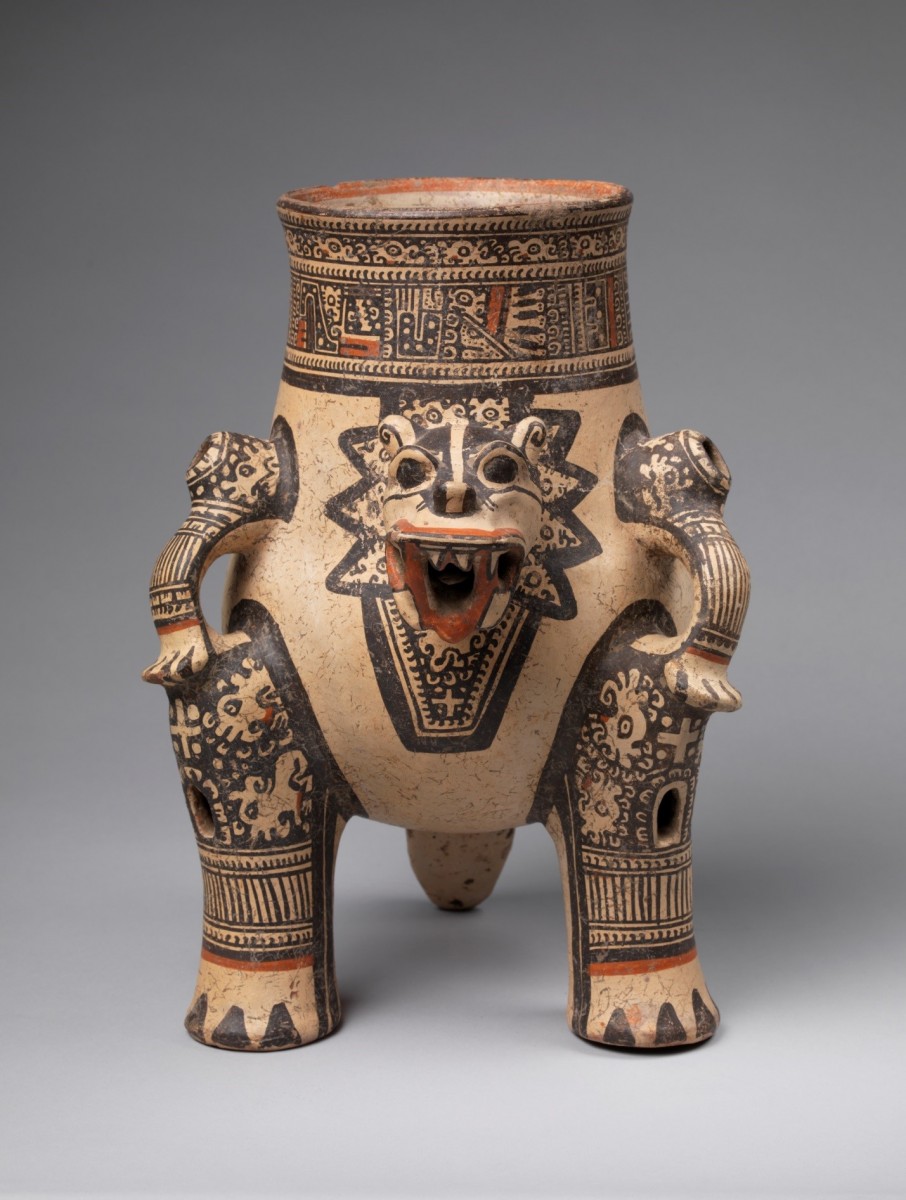
Figure 2. A composite of a human-jaguar is a typical way that shamanic art shows the animal self within the human shaman. Ex. coll William C. and Carol W. Thibadeau, Michael C. Carlos Museum, 1991.4.337. Photograph by Bruce M. White, 2013.
Blended Beings
Artists in the ancient Americas acknowledge the visionary transformational experience in myriad ways, combining humans and other animals in creative and telling compositions (Fig. 2). The Carlos collection is rife with these blended beings that figure so prominently in ancient American art. I looked through Emory University’s holdings and easily placed more than a hundred of its pieces in a temporary exhibition, “For I am the Black Jaguar: Shamanic Visionary Experience in Ancient American Art” in Fall 2012. As the curator of a large collection in place since 1988, I did not direct the collecting of objects for this exhibition, except in the area of textiles. Therefore, I did not specifically locate pieces relevant to shamanism; they were preexisting in the collection and “ripe for the picking” as long as I knew how to identify them.
The Black Jaguar exhibition celebrated such pieces as Figure 2, which gives a jaguar the vertical stance of a human, placing hands on knees, while emphasizing the bloody fangs of an attacking cat. The spots are segregated onto only certain parts, not as in the real feline but as in a person decorating the body with images of spots to invoke the powers that go with those markings. Each spot is in fact a tiny jaguar, so that the levels of meaning multiply. Yet the important point here is that a person and a cat are masterfully presented as one dualistic being. This piece sets the stage for the first of the featured works.
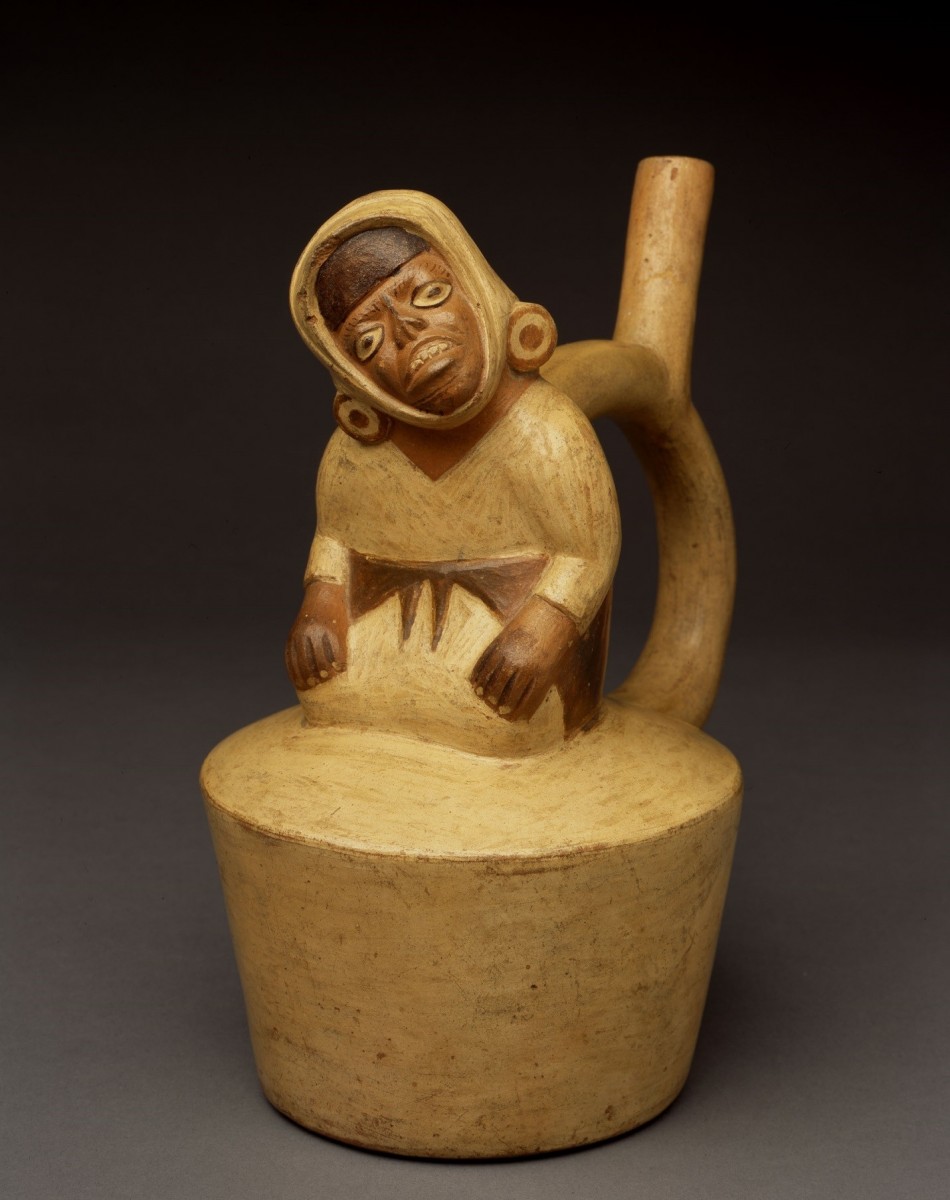
Figure 3. A seated man in the shamanic meditation pose betrays characteristics of someone who has contracted the flesh-wasting disease we call leishmaniasis. Michael C. Carlos Museum, Gift of William C. and Carol W. Thibadeau, 1989.8.72. Photograph by Michael McKelvey, 2008.
Conquering Leishmaniasis
In Figure 3, a person is illustrated who is experiencing the dreaded flesh-eating disease now called leishmaniasis [leash-meh -NI-ah-sis]. Infected sand flies transfer the disease from dogs and cats to humans. In the muco-cutaneous form of leishmaniasis, cysts form around the nose and mouth, spread, and the flesh begins to die, to the point of exposing the skull in extreme cases.10 Lips, nose cartilage, and eyelids are the first to go. The seated man’s face lacks an upper lip, the end of his nose, and much of the eyelids (which the artist darkened with a black line to draw added attention to this feature).
This person is first identified as a man because he wears large round earrings that were male finery; however, his long dress is a female garment, so he may well be between gender categories as is common among shamans in the Americas and worldwide.2(54) He sits with his hands planted on his knees in meditation, a sure sign of the spiritual role.2(74) The notably large earrings also support the shamanic role and high status of this survivor. In the ancient Andes, boys wore small earrings, gradually stretching the ear holes to achieve in maturity the ability to wear giant posts and fronts; the Spanish invaders called the important indigenous men orejones, or “big ears”.11 This individual is depicted as important, high in status, spiritually focused, and having experienced leishmaniasis.
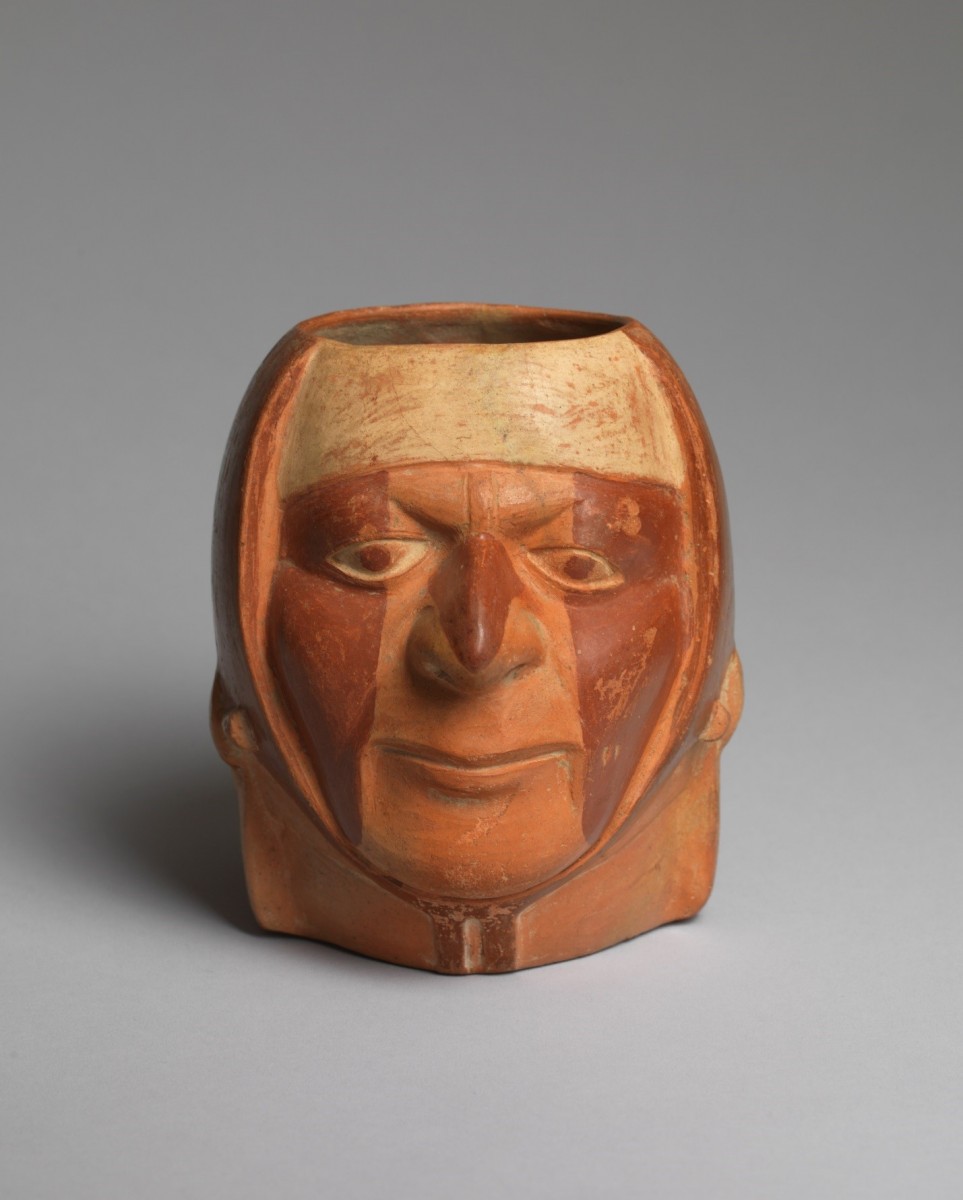
Figure 4. Physiognomic portraits of non-diseased individuals are also typical in Moche art. Ex. coll William S. Arnett, Michael C. Carlos Museum, 1999.3.115. Photograph by Bruce M. White, 2012.
To demonstrate that the face of the individual in Figure 3 is not simply a common face of men—or women—depicted in this era (the Moche of 1-650 AD in Peru), a representative head jar is shown in Figure 4 with soft lips, a prominent nose, and eyes with notable eyelids. In its attention to human physiognomy, the Moche style is unusual in the scheme of ancient Andean, and American, art as a whole. Therefore, Fig. 3’s showing a dramatically blunted nose and fully-exposed upper teeth can be interpreted as a conscious gesture on the part of the artist, and not a typical stylistic choice of the era.
Like the several hundred “true” Moche portrait head vessels, Figure 4, with his drooping eyes, wide lips, and particular face-paint pattern, can be interpreted as corresponding to a real individual who looked like that to some degree (although art is always an interpretation, needless to say). Moche portraits depict not only heads but also full-body renditions, many of them depicting the same individuals celebrated in the head sculptures.12 A subset of Moche heads also represents men with the same telltale characteristics of leishmaniasis. In other full-body renditions, visual impairment, loss of limbs, and other conditions are represented.2 Portrait prestige is shared by subjects who are “typical” in their looks and those who are not. This alone speaks volumes about the elevation of what we might call “disability”.
Survivorship, Not Pathology
In all these images, it is possible to argue that survivorship, rather than pathology, is a strong message. The individual in Figure 3 is shown having his/her face ravaged, as in the mucocutaneous strain of leishmaniasis,10 but not to the point of death. People can live for long periods with cutaneous leishmaniasis; however, if they also have visceral leishmaniasis, they are much less likely to survive. Indeed, previous to modern drug treatment, most people would have eventually died of this illness as it horrifically advanced.
In Western medical terms, someone with a stronger immune system or who only contracted the cutaneous version of the disease, would more likely be capable of achieving the in-between state shown in Figure 3’s face. It may well have been an ancient practice to cut away the affected flesh, especially because leishmaniasis often begins in the nose. However, more importantly, in shamanic terms, such a person would evince more powers, more ability to heal, more spiritual blessings. They would in a sense already be a shaman, a healer of themselves, and through the logic of the wounded healer, able to assist others.2(pp54,58,155),13
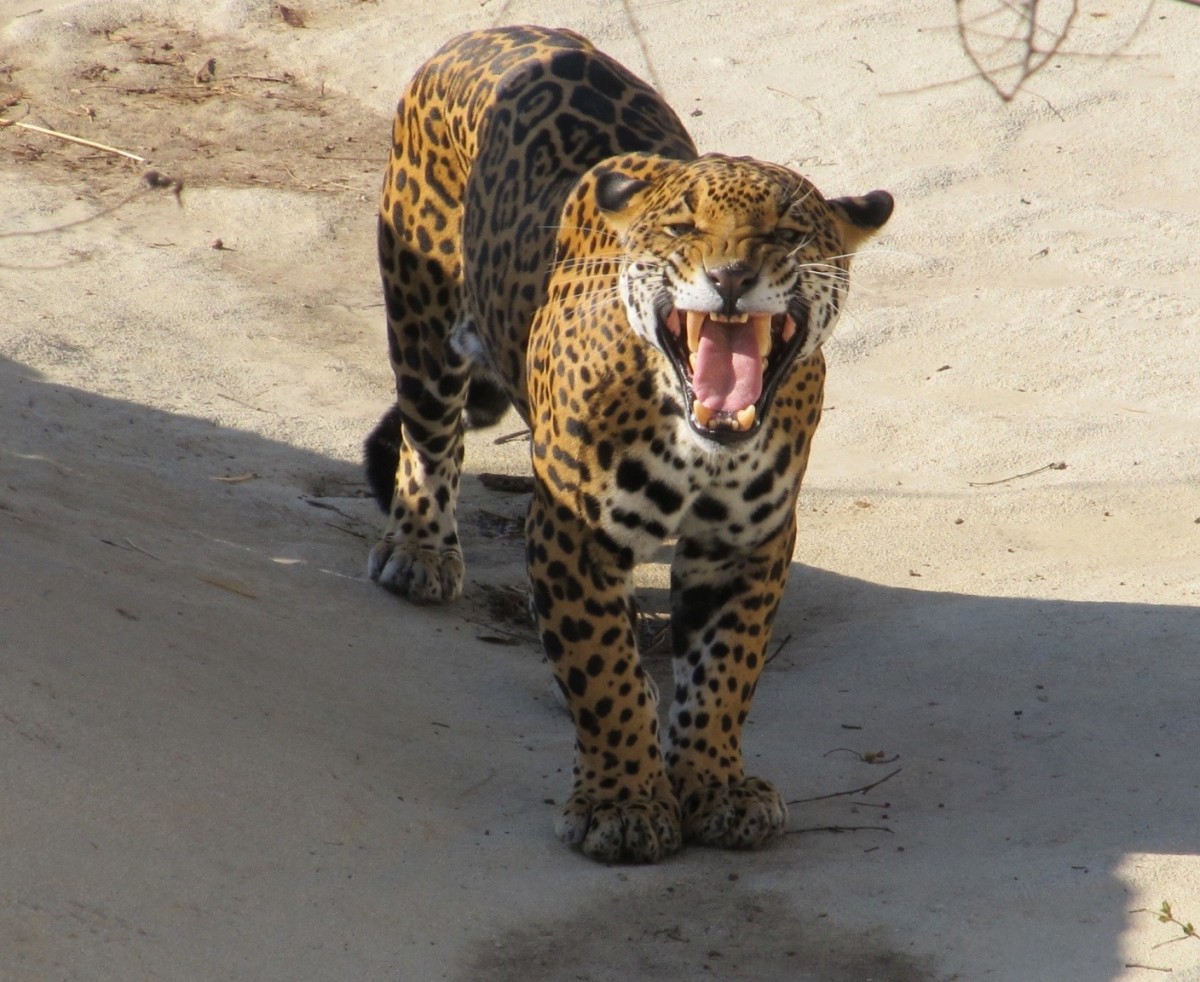
Figure 5. The visage of a snarling jaguar features visible teeth, a flat nose, and darkly outlined eyes, which could be seen as generally similar to that of the man in Figure 2, according to shamanic belief in animal selves. Photograph courtesy of Pixabay.
Human/Animal Imagery
Returning to the issue of humans and animals, the face of someone in the throes of this disease can be likened to that of an animal, specifically a feline (Figure 5). A jaguar’s prominent teeth, bulging eyes, and relatively flat nose with nostrils protruding from the plane of the head are points of similarity between the jaguar and Figure 3. The artist darkening the outlines of the enlarged eyelid-less eyes also mimics the coloration of jaguars, which have strongly black-outlined eyes. Once again, this visual echoing communicates ultimate prestige, being likened to the king (and queen) of the jungle, the Americas’ most powerful apex predator, the highest of the high. Jaguars’ abilities are legendary: they swim, climb trees, kill anacondas and caiman, see in the dark, hunt day or night, leap 21 feet in a single bound.14 In the tropics, they rule. Therefore, in shamanic logic, to resemble one is to manifest not dis-ability or dis-ease but ideal, true power. Such power was evidenced in the jaguar-person’s apparent ability to live with and perhaps overcome such a dreaded condition as leishmaniasis.
In shamanic belief, a jaguar is not simply perceived as a physical animal; rather, it is the manifestation of a larger spirit of all jaguars, all animals, all phenomena. Amazonian and traditional Andean thought includes the Great Spirit of the Jaguar, the Great Spirit of Animals, and so on.15 These categories of specific spiritual overseers convey that the earthly beings are manifestations of otherworldly forces—or at least ones that are shared from the “Beyond” to the “Here”. The Inca called this camay, a relationship between a camac (spiritual infuser, such as the Great Spirit of Llamas) and a camasca (spiritual receiver, actual earthly llamas).15
Spiritual Connection
What a person with advancing leishmaniasis and the jaguar may share is a profound spiritual connection, not simply a physical one with the similar fangs, nose, eyes. If the outer manifests the inner, a staple of Andean worldview and shamanic experience, then a person with such features is manifesting a jaguar-self. They can use those prodigious powers to intercede with the spirit realm on behalf of others with the condition, according to the logic of the wounded healer. A jaguar is a consummate hunter and killer, a spirit that serves shamans well in hunting out and destroying the malevolent invisible disease “darts”.
I find modern traditional shamans’ experience as largely a continuation of a long visionary tradition, reaching back as much as 30,000 to 40,000 years. An anonymous Taulipang shaman exhorted others to “Call upon me for I am the black jaguar…I drive away the illness…It is me they have to evoke if they wish to frighten it [the disease] away.”16
As another visionary reported:
I wasn’t a fish anymore, but a big cat, a tiger. I had experienced as a bird and a fish, a freedom of movement, flexibility, grace. I moved as a tiger in the jungle, joyously, feeling the ground under my feet, feeling my power; my chest grew larger. I then approached an animal, any animal. I only saw its neck, and then experienced what a tiger feels when looking at its prey.17
Although the latter person did not become specifically a jaguar during trance, he did hunt in his vision precisely as a tiger does by breaking necks (whereas jaguars crush skulls). Note that he used the direct phrasing, “what a tiger feels,” not the indirect “as if I were a tiger that feels…”. The Taulipang shaman likewise avows “I am the black jaguar” without distancing himself in any way from his animal self. Indeed, most Central and South American ancient languages and those that continue in use to this day use the same word for shaman and for jaguar, which translates as jaguar.2(p63) There are myriad other quotes about the experiencing of becoming wild animals spread throughout my previous work and that of many ethnographers and other scholars, showing this is a common occurrence during trance.
Conclusion
Western medicine thankfully has found a way to stem the tide of leishmaniasis, although it still affects not only Americans but Asians and others living in the tropics.10 Although no disease can be seen as “good”, it remains important to note that other cultures, today and in other times, may elevate those who appear to conquer them, even if temporarily, and elevate them to having special healing powers.
The Native American positive attitude toward anomalous bodies—seeing them as decidedly not disabled—seems fairly unusual in world history and culture. Therefore, recognizing the wide range of human responses to the interrelated issues of what constitutes disease, curing, health, and survival is all the more crucial in today’s world. Such cross- temporal and cultural awareness may inform present-day global attitudes in intriguing ways. Empowerment is a theme that can unite rather than divide.
References
- Stone R. Nothing is missing: spiritual elevation of a visually impaired Moche shaman. In: Millett-Gallant A, Howie E, eds. Disability and Art History. New York: Routledge; 2016.
- Stone R. The Jaguar Within: Shamanic Trance in Ancient Central and South American Art. Austin, TX: University of Texas Press; 2011.
- Stone-Miller R. Seeing with New Eyes: Highlights of the Michael C. Carlos Museum Collection of Art of the Ancient Americas. Atlanta, GA: Michael C. Carlos Museum; 2002:227.
- Parks SV. ‘Dis’-abilities as Divine: Bodily Anomalies and Shamanic Power in Ancient Costa Rican Ceramic Effigies [honors thesis]. Atlanta, GA: Emory University; 2013.
- Langdon EJM. Dau: shamanic power in Siona religion and medicine. In: Langdon EJM, Baer G, eds. Portals of Power Shamanism in South America. Albuquerque, NM: University of New Mexico Press; 1992:50.
- Baer G. The one intoxicated by tobacco. In: Langdon EJM, Baer G, eds. Portals of Power Shamanism in South America. Albuquerque, NM: University of New Mexico Press; 1992:84.
- Perrin M. The body of the Guajiro shaman: symptoms or symbols? In: Langdon EJM, Baer G, eds. Portals of Power Shamanism in South America. Albuquerque, NM: University of New Mexico Press; 1992:107.
- Luna LE. Icaros: magic melodies among the Mestizo shamans of the peruvian amazon. In: Langdon EJM, Baer G, eds. Portals of Power Shamanism in South America. Albuquerque, NM: University of New Mexico Press; 1992:242.
- Cameron C. Creature spirits everywhere about as: a voice of Black Elk.” In: Eaton R, ed. The Human/Animal Connection. Incline Village, Nevada: Sierra Nevada College Press; 1985:30-41.
- World Health Organization. “Leishmaniasis Fact Sheet N°375.” January 2014.
- Stone-Miller R. Seeing with New Eyes: Highlights of the Michael C. Carlos Museum Collection of Art of the Ancient Americas. Atlanta, GA: Michael C. Carlos Museum; 2002:194.
- Donnan CB. Moche Portraits from Ancient Peru. Austin, TX: University of Texas Press; 2004:113.
- Halifax J. Shaman: The Wounded Healer. New York, NY: Thames and Hudson; 1982.
- Wolfe A, Sleeper B. Wild Cats of the World. New York, NY: Crown; 1995:95.
- Salomon F, Urioste G. The Huarochirí Manuscript: A Testament of Ancient and Colonial Andean Religion. Austin, TX: University of Texas Press; 1991:16-18.
- Saunders N. Icons of Power: Feline Symbolism in the Americas. London, England: Routledge; 1998:32.



 In One Hundred Names for Love: A Stroke, a Marriage, and the Language of Healing,1 Diane Ackerman
In One Hundred Names for Love: A Stroke, a Marriage, and the Language of Healing,1 Diane Ackerman
 Member since 2019 | JM14274
Member since 2019 | JM14274


NO COMMENT